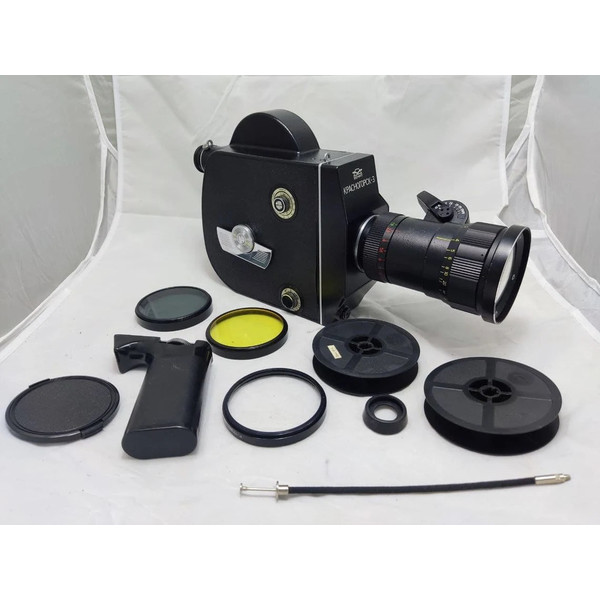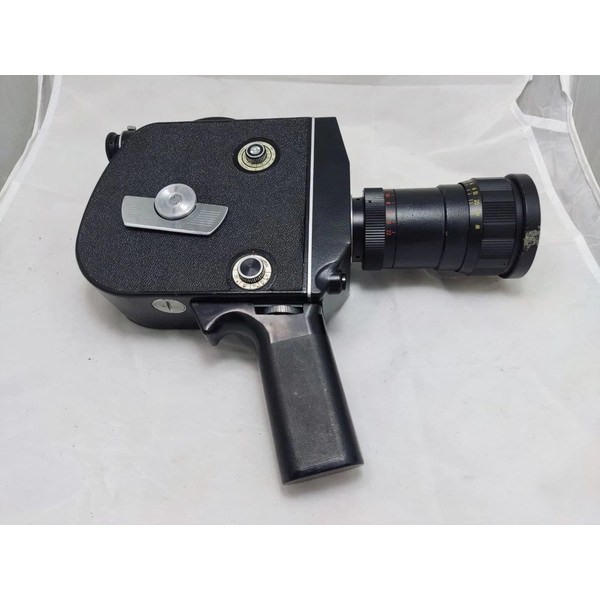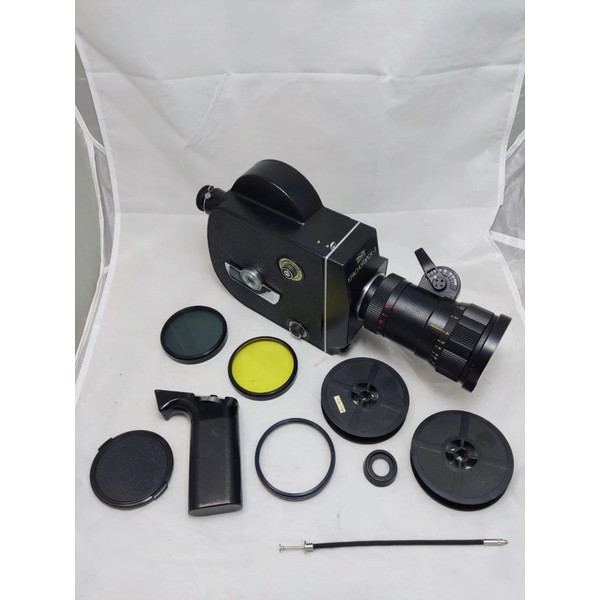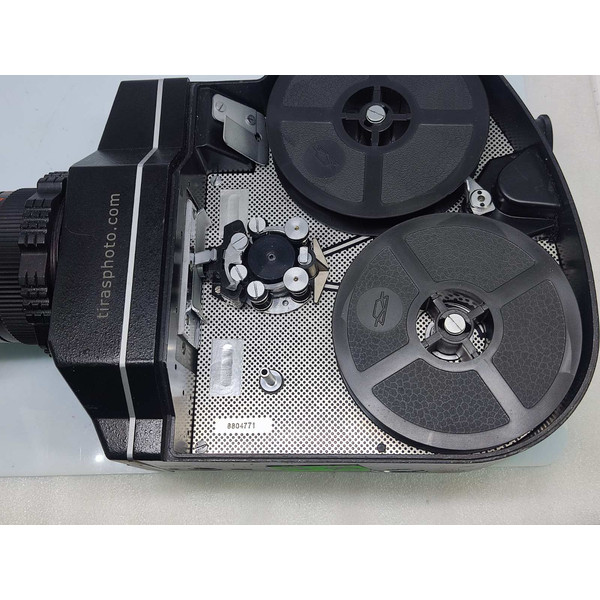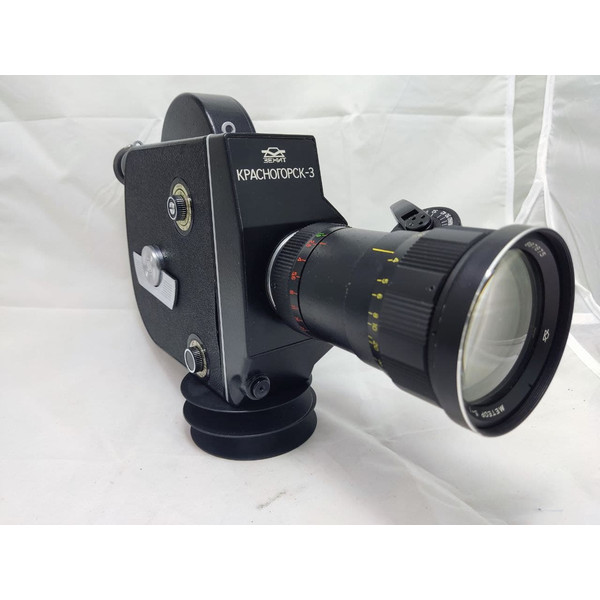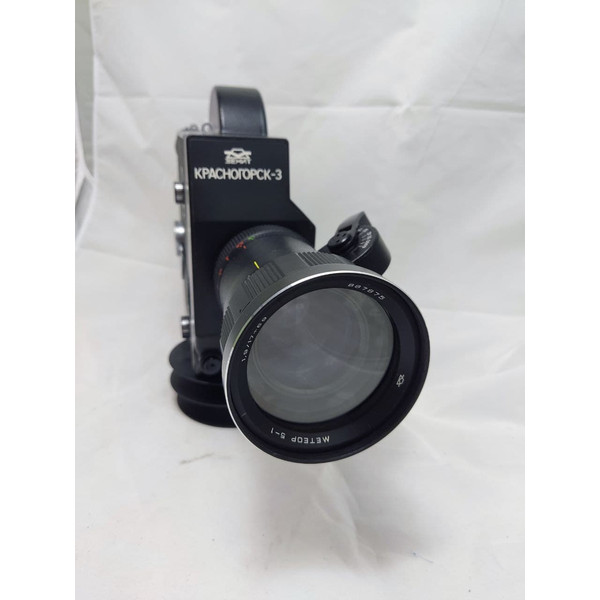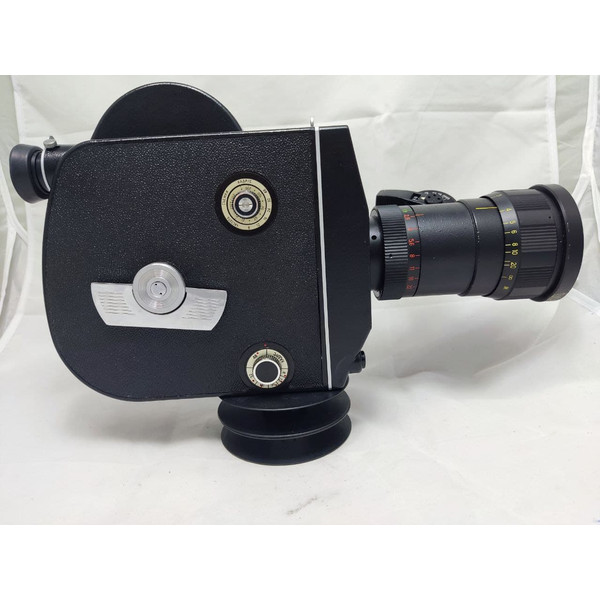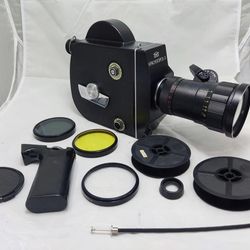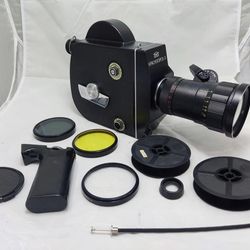Ultra16 Krasnogorsk-3 converted 1.85:1 M42 USSR 16mm Movie Camera K-3 KMZ K3
Quantity
Movie camera Super16 Krasnogorsk-3 M42 16mm Film Cine Camera USSR K3 K-3. Meteor 5-1 17-69mm f1.9 zoom lens
The camera is converted to Ultra16 (1.85:1 ratio) film format.
Ultra 16mm
The DIY-crafted Ultra 16 is a variation of the Super 16. Cinematographer Frank G. DeMarco is credited with inventing the Ultra 16 in 1996 while filming tests for Darren Aronofsky's Pi. The Ultra 16 is created by expanding the left and right sides of the gate of a standard 16mm camera by 0.7mm,
to expose part of the horizontal area between the perforations. Placing perforations on standard 16mm film (on one side [or both sides, if double-perforated film is used] of the gaps between frames) allows these normally unexposed areas to be used.
Ultra 16 format with frame sizes of 11.66 mm × 6,15 mm (0.459 in × 0.242 in) provides a frame size between standard 16 mm and Super 16 while avoiding the expense of converting a 16 mm camera to a Super 16 camera, a larger lens element requirement for proper aperture field coverage on Super conversion cameras 16 and potential image vignetting, caused by the attempt to use some "regular" 16mm lenses on cameras with Super 16 conversion. Thus, almost all standard 16mm optics can now provide a wider image in Ultra 16, but without the aforementioned pitfalls and optical "flaws",
arising when trying to use them for Super 16.
The image is easily converted to NTSC/PAL (1.33 ratio), HDTV (1.78 ratio) and 35mm film (1.66 [European] and 1.85 widescreen) using either full vertical frame or full the width of the (interframe) frame. and sometimes both,
depending on the required application.
Kranosgorsk works in all conditions, in cold, heat, rain and dust. This good camera for travel, expeditions, and in a war zone.
The supplied zoom lens is of extremely high quality and is sufficient for almost any recording situation. Any Pentax screw mount lens will work on the K-3, so you can use any 35mm SLR lens on your K-3.
The K-3 has been adopted by many film schools, including the University of Southern California's School of Cinema and Television. It has a semi-automatic diaphragm setting.
Its low price, rugged construction and sophisticated optics have made it very popular with both beginning filmmakers and professionals. Among the K-3's credits are music videos for the Spin Doctors and Suicidal Tendencies.
Director Spike Lee shot some of the footage in his film Get On The Bus using a K3. There is a photo of Spike holding a K-3 on the cover of the soundtrack CD.
